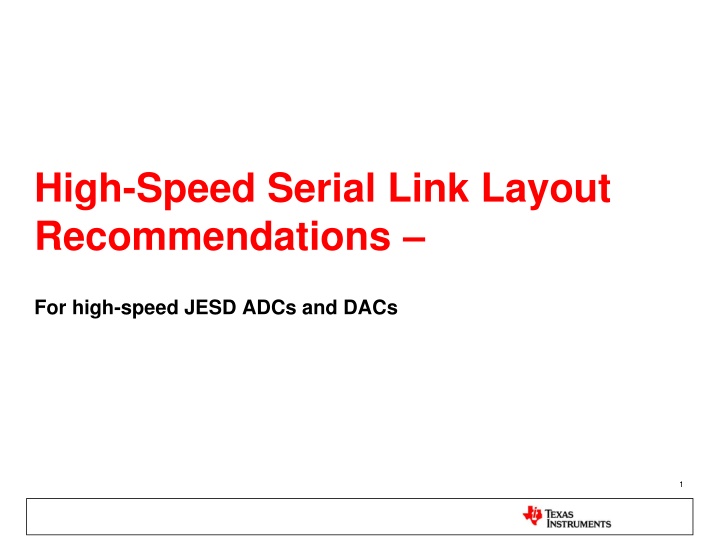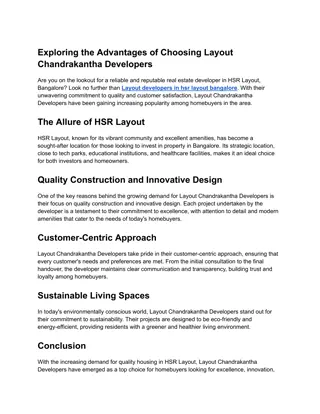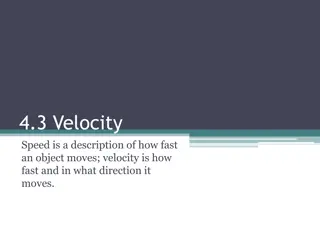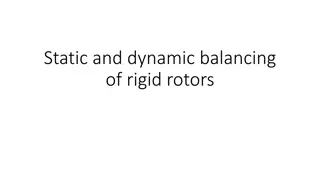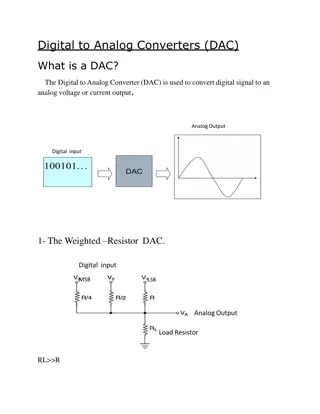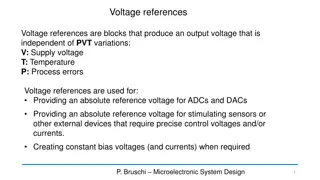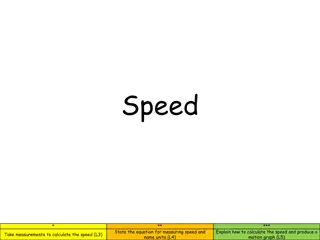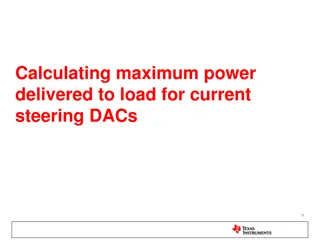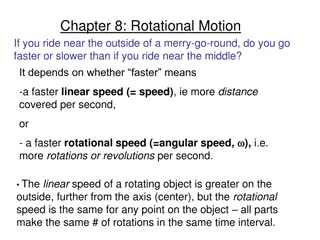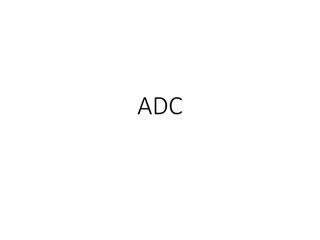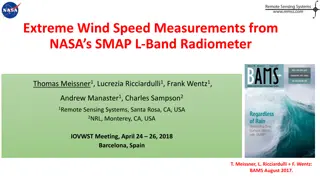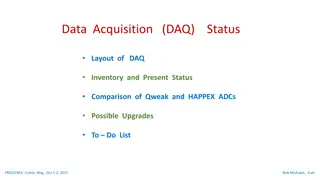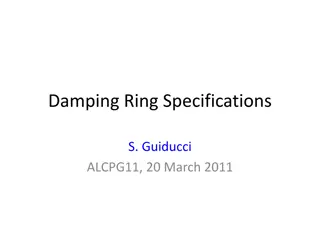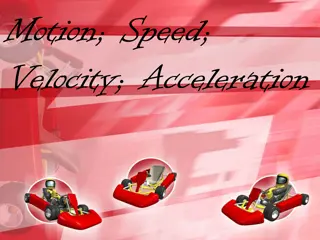High-Speed Serial Link Layout Recommendations for ADCs and DACs
Differential routing is recommended for high-speed JESD ADCs and DACs to improve EMI and crosstalk performance. It's important to keep the distance between differential traces constant, maintain equal lengths for better signal integrity, use bends effectively, and address mismatches between individual traces to ensure data reliability.
Download Presentation

Please find below an Image/Link to download the presentation.
The content on the website is provided AS IS for your information and personal use only. It may not be sold, licensed, or shared on other websites without obtaining consent from the author.If you encounter any issues during the download, it is possible that the publisher has removed the file from their server.
You are allowed to download the files provided on this website for personal or commercial use, subject to the condition that they are used lawfully. All files are the property of their respective owners.
The content on the website is provided AS IS for your information and personal use only. It may not be sold, licensed, or shared on other websites without obtaining consent from the author.
E N D
Presentation Transcript
High-Speed Serial Link Layout Recommendations For high-speed JESD ADCs and DACs 1
Differential vs Single-Ended Routing Differential routing provides improved EMI and crosstalk performance over single-ended traces. This is especially useful for dense layouts with many signal lines. Recommendations Either single-ended or differential can be used, but you should stick with one or the other for the full length. For instance, if the signal coming out of the transmitter is differential then route the signal differential all the way to the receiver. Do not come out of the transmitter differential then split into single-ended traces and then come back to differential at the receiver. Each split will create a discontinuity in the trace impedance. For most designs, there is no reason to deviate away from differential routing for the high-speed serial link signals. 2
Routing of Differential Traces Recommendations: Keep the distance between the differential traces (S) constant over the entire trace length Keep the length of the individual traces of the differential pair the same to minimize skew and phase differences. For tightly coupled differential traces (S = W), keep the distance (D) between adjacent signals and other objects or routing greater than 3 to 5 times the width (W) of the trace (D > 3 * W). For loosely coupled differential traces (S > 2 * W) or single-ended traces keep adjacent signals away at a distance of 3 to 5 times the height of the dialectric (D > 3 * H). Tightly coupled traces have better crosstalk performance but more loss. D W W W W S S H 3
Bends in Differential Traces Bends are generally okay. They will introduce an impedance mismatch, but it is negligible compared to other sources of mismatches. Bends will introduce a mismatch between the individual traces of a differential pair. Recommendations: Use bends in the opposite direction to correct for mismatches. Use 45 bends rather than 90 bends. To make a 90 bend, use two 45 bends. Rounded bends can also be used but it may be harder to control the spacing of the traces throughout the bend. 4
Mismatches Between the Individual Traces of a Differential Pair Mismatches between the individual traces will cause a skew between the positive and negative signals of the differential pair. This will decrease the opening of the data eye. Recommendations: If the mismatch is created by a bend, then a bend in the opposite direction will fix the mismatch. Otherwise, use jog-outs to increase the length of one side. Use multiple small jog-outs instead of one large jog-out. Jog-outs will cause an impedance mismatch. Equal number of bends in each direction Multiple small jog-outs to fix mismatch 5
Wiggles to Match Trace Lengths Wiggles are used to match the lengths of multiple differential pairs. Recommendations: Wiggles should follow the recommendations for bends given previously. Rule of thumb: keep the diameter of the wiggle at least 3 times trace width. Use an equal number of turns in each direction to keep the traces of the differential pair matched. D > 3xW Lanes of matched length are not necessary for the JESD204b standard. Large mismatch between lanes can result in higher latency. Wiggles used to match the length of two differential pairs 6
PCB Recommendations (Differential Pairs) Route differential signal as tightly coupled microstrip or stripline lanes (S<=W) H1 W T S H2 Differential Stripline T S 100 differential impedance W Avoid 90 turns Reduces +/- trace mismatch Reduces impedance discontinuity H Differential Microstrip Recommend 0201 series components (AC coupling) to minimize impedance discontinuity of pads 0201 AC coupling capacitors Routing on inner layers (stripline) has advantages: Better impedance control No speed issues with Nickel plating Less interference/emissions 7 Via stitching
PCB Recommendations (Trace Matching) Device Clock, SYSREF, SYNC~, and serial lanes must be between matched +/- traces Device Clock and SYSREF pairs must be matched to each other Matched Dev. Clock and SYSREF pairs Serial lanes need NOT match to each other R > 3xW Use wiggles to match the lengths of multiple differential pairs. Keep radius of the wiggle > 3 times trace width Use equal number of turns in each direction Jog-out matches +/- traces 8 Use small jog-outs to correct +/- trace mismatch
PCB Recommendations (Vias) Vias in the signal path create impedance discontinuities that result in signal reflections/degradation Simulate signal path with vias to determine signal integrity before manufacturing Avoid changing layers where possible, but use adjacent grounding vias where layer change is necessary to provide return current path Via stitch along sensitive differential signal paths Use blind vias or back-drilling to eliminate via stubs Waveform blip due to via in the signal path Adjacent GND vias 9 Via stitching
Vias in the Signal Path A via will present an impedance discontinuity resulting in reflections and a degradation of the signal. Recommendations: If vias are used, keep the via delay short compared to the rise time of the signal to minimize reflections. Vias can be compensated by adding ground vias close by for the return current. Avoid stubs from vias to inner layers by having them back drilled. Alternatively, blind vias are a better choice to eliminate stubs. Simulate the signal path with the vias to determine signal integrity before manufacturing the board. Source: High Speed Mezzanine Card (HSMC) Specification (Altera) 10
In-Pad Vias for BGA Package Recommendations: If In-Pad vias are used with a BGA package and the high-speed serial link signal is coming from an inner layer, follow the recommendations from the previous slide. If the signal is routed to the ball of the package without going through a via, remove the via from these pins. In pad vias on low speed signals and ground and power are fine and will help to dissipate device heat. 11
Component Pads in the Signal Path Pads will add capacitance and therefore an impedance mismatch Recommendations: Generally, the only need for components in the signal path is DC blocking capacitors. Try to avoid other components for gigabit connections. For gigabit connections, use 0201 components when possible, including the DC blocking capacitors. A value of 0.1 uF is recommended. Excess capacitance can be limited by clearing the ground plane underneath the component. Use SI simulation to determine the required amount. Cap with cleared GND plane and vias Differential DC blocking caps with cleared GND plane and vias Source: High Speed Mezzanine Card (HSMC) Specification (Altera) 12
Reference Planes Recommendations: Use a single ground plane as the signal reference. Do not put splits in the reference plane underneath the signals. The return current for high-speed signals will follow the trace on the reference plane. A split will require the return current to travel around the split. Keep analog signals separate from digital signals, however a single ground plane is fine. During routing, split the ground plane at the DAC or ADC into analog and digital planes and route the signal traces in their respective domains. After routing, recombine the two ground planes into one. If using a stripline trace, place reference planes on both the top and bottom of the trace and do not put splits into either of them. 13
PCB Recommendations (Reference Planes) Use a ground planes as the signal reference on adjacent layers Avoid splits in the reference plane underneath signals when possible Return current for high-speed signals follows trace on the reference plane Splits require the return current to travel around, increasing loop inductance, coupling, and interference When reference plane splits under differential signals are necessary: Minimize split width Ensure tight coupling of differential pair Jump split at 90 Good GND via stitching along channel Avoid jumping split in vicinity of other noisy signals 14
PCB Info Board material When designing for signal speeds above 3Gbps, special PCB materials with a Df (loss factor) of .004 or less should be used. Megtron 6 Rogers Mix high speed material with standard material to save on cost Route High Speed Serdes traces with special PCB material Remaining traces routed on 370HR Board shop has reported that 370HR can be used up to 10GHz with very short traces (1-3 inches) Suggest running signal integrity simulation before attempting this Rev D of ADS42JBx9EVM constructed with 370HR only and operates @ 3.125GHz lane rate For allowable skew between lanes, it depends on the device programming used. DAC38J84 RBD length can be programmed up to 32 octets which allows up to 32*10 UI intervals An example test bench setup uses RBD=20, K=20, LMF=841, S=1, HD=1 which allows nearly 200 UI At 10Gbps, UI is 100pS and 200 UI = 20nS. With signal delay ~ 154ps/in, this would equal 129 inches! (But deterministic delay would be very large as well)
PCB Recommendations (Material/Stack-Up) Serial lane speeds > 3 Gb/s at length >8 Recommend low-loss, good impedance consistency dielectric material Rogers-4350, Megtron-6. Use premium dielectric only where needed Serial lane speeds < 3 Gb/s at length <8 Recommend low cost materials FR4, 370HR Material QTY $/board Megtron 6 50 $660 370HR 50 $350 Board shop reports that 370HR can be used up to 10 GHz with very short traces (1-3 inches) 16
Summary of Recommendations Always take steps to minimize impedance discontinuities, meaning that the traces should be uniform from source to load. Use differential routing for most designs and stick to it for the full trace length. Keep the differential trace spacing constant and the individual traces within the pair equal length. Keep adjacent traces and objects a sufficient distance away to avoid crosstalk. Only use bends of 45 . Use two 45 bends for 90 turns. Use multiple small jog-outs to correct mismatch between traces of a differential pair. Avoid stubs from vias by backdrilling or using blind vias. Add ground vias close by to account for return currents. Do not split the reference planes underneath the signals.
